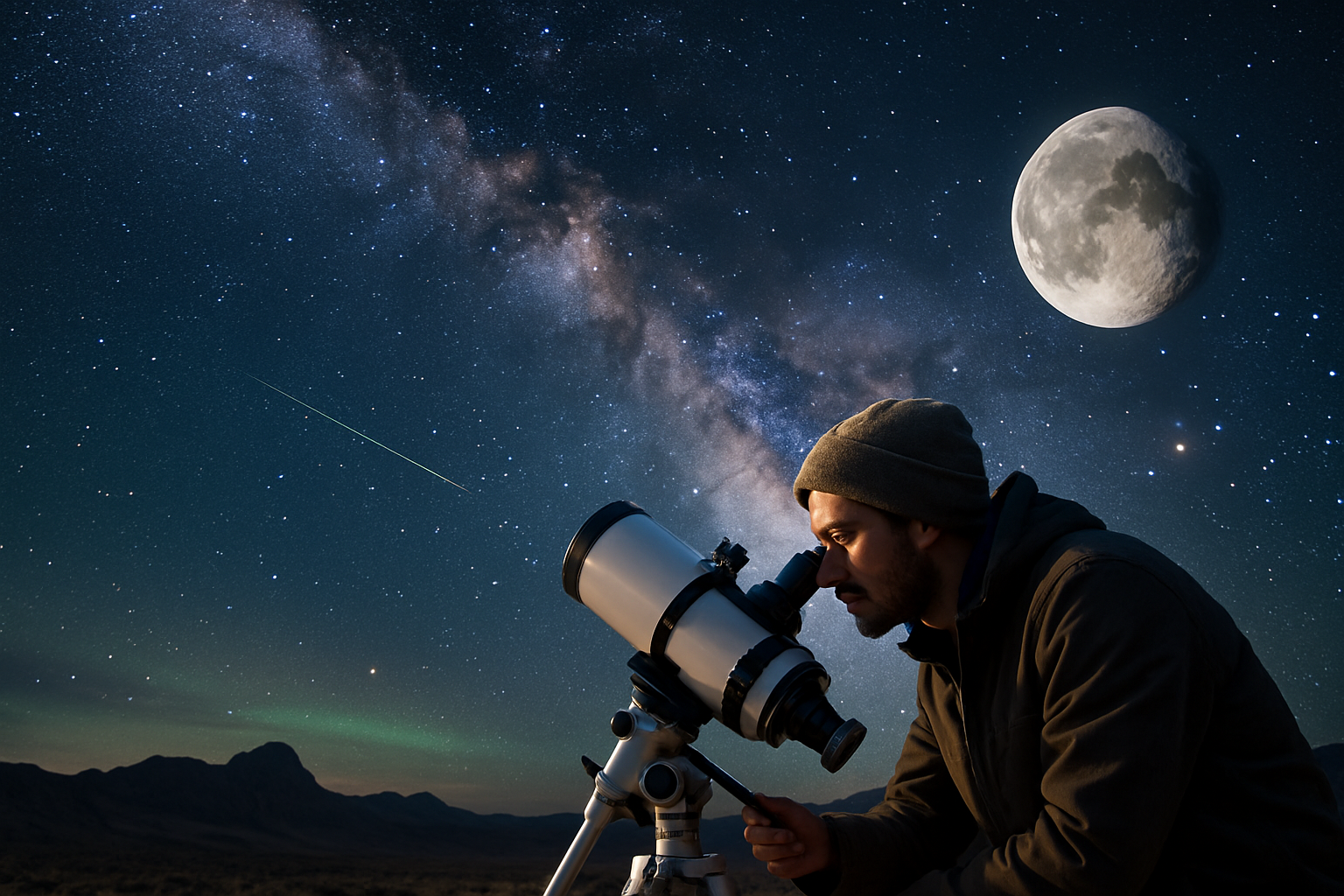Exploring the World of Astrotourism: Stargazing Adventures for Modern Travelers
In a world where light pollution increasingly obscures our view of the cosmos, astrotourism emerges as a captivating trend for those seeking to reconnect with the night sky. This unique form of travel combines the thrill of exploration with the awe-inspiring beauty of celestial observation, offering travelers a chance to witness the universe in all its glory. From remote desert locations to purpose-built dark sky reserves, astrotourism destinations are becoming the new frontier for adventurers and star enthusiasts alike.

The International Dark-Sky Association (IDA) has been at the forefront of this movement, certifying locations that meet strict criteria for night sky quality and outdoor lighting management. These designations not only attract stargazers but also promote environmental conservation and raise awareness about the importance of preserving our view of the cosmos.
Destinations That Shine Bright
While many associate stargazing with remote wilderness areas, astrotourism destinations come in various forms. Some of the world’s most renowned locations for stellar observation include:
- Atacama Desert, Chile: Known for its exceptionally clear skies and high altitude, the Atacama is home to several world-class observatories and offers unparalleled stargazing opportunities.
- NamibRand Nature Reserve, Namibia: Africa’s first certified Dark Sky Reserve provides a stunning backdrop of desert landscapes against which to observe the southern hemisphere’s night sky.
- Aoraki Mackenzie International Dark Sky Reserve, New Zealand: This reserve encompasses Aoraki/Mount Cook National Park and offers some of the darkest skies in the world.
- Jasper National Park, Canada: The second-largest Dark Sky Preserve in the world, Jasper hosts an annual Dark Sky Festival celebrating the night sky through science, culture, and the arts.
- Pic du Midi, France: This mountain-top observatory in the Pyrenees offers visitors the chance to spend the night above the clouds, surrounded by state-of-the-art telescopes.
The Astrotourism Experience
Astrotourism experiences can range from casual stargazing to in-depth astronomical tours and workshops. Many destinations offer guided night sky tours led by knowledgeable astronomers who can help visitors identify constellations, planets, and other celestial phenomena. Some locations provide high-powered telescopes for public use, allowing travelers to get up close and personal with distant galaxies and nebulae.
For those seeking a more immersive experience, astrophotography workshops have become increasingly popular. These sessions teach participants how to capture stunning images of the night sky, combining technical photography skills with an appreciation for the cosmos.
Impact on Local Communities and Environments
The growth of astrotourism has had a significant positive impact on many communities, particularly in rural areas. By attracting visitors during nighttime hours, this form of tourism has created new economic opportunities and extended the traditional tourist season. Additionally, the emphasis on preserving dark skies has led to improved lighting practices in many regions, benefiting both wildlife and human health.
However, as with any form of tourism, there are challenges to consider. Increased visitor numbers can put pressure on fragile ecosystems, and the development of tourism infrastructure must be carefully managed to maintain the very darkness that attracts visitors in the first place.
The Future of Astrotourism
As interest in astrotourism continues to grow, new trends and innovations are emerging. Virtual reality technologies are being developed to bring the night sky experience to those unable to travel to dark sky locations. Meanwhile, space tourism companies are setting their sights even higher, promising future travelers the opportunity to stargaze from beyond Earth’s atmosphere.
The astrotourism industry is also adapting to changing travel patterns in the wake of global events. With more people seeking outdoor and socially distanced experiences, stargazing adventures are well-positioned to meet this demand, offering a unique blend of nature, science, and wonder.
Celestial Travel Tips
- Plan your visit around the lunar cycle; new moon periods offer the darkest skies for optimal stargazing
- Bring appropriate clothing; temperatures can drop significantly at night, even in desert locations
- Allow time for your eyes to adjust to the darkness; it can take up to 30 minutes for full dark adaptation
- Consider investing in a red flashlight to preserve your night vision while navigating in the dark
- Learn to identify a few key constellations or download a stargazing app to enhance your experience
- If photographing the night sky, bring a sturdy tripod and practice your camera settings beforehand
Astrotourism offers a unique opportunity to step away from the hustle and bustle of modern life and reconnect with the vast universe above us. As we continue to push the boundaries of space exploration, the ability to gaze up at the stars serves as a powerful reminder of our place in the cosmos. Whether you’re an amateur astronomer or simply someone who appreciates natural beauty, a stargazing adventure might just be the transformative travel experience you’ve been seeking.





